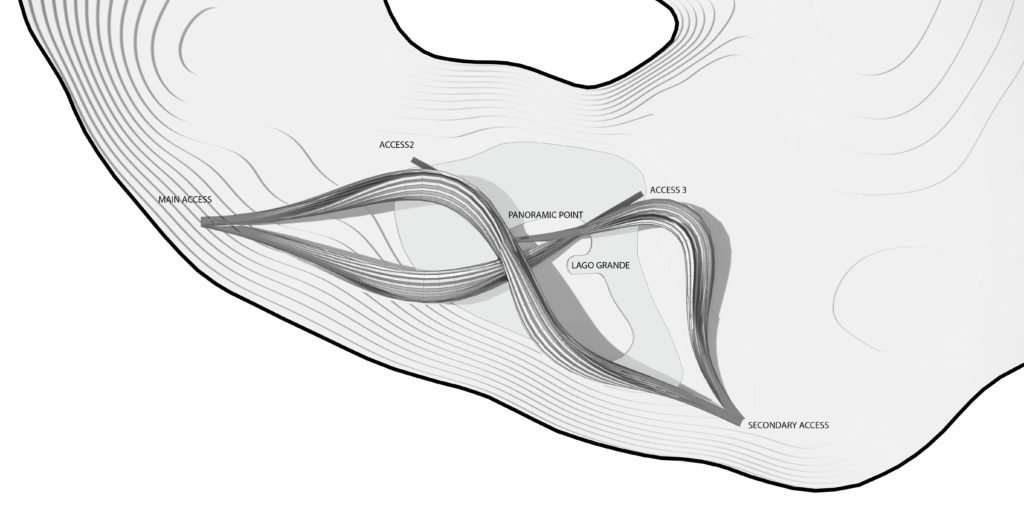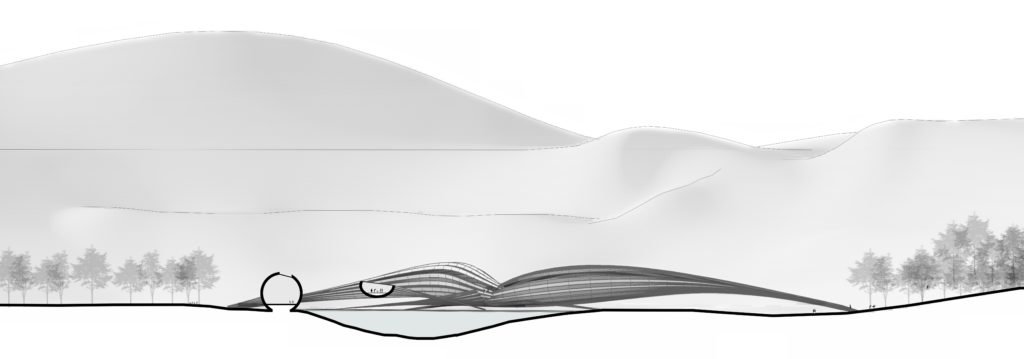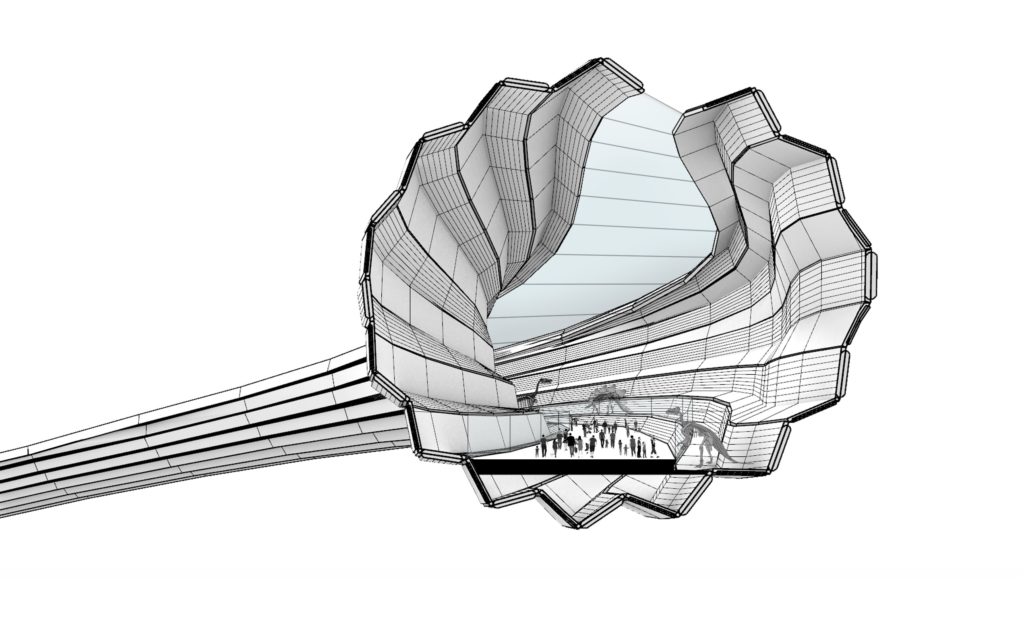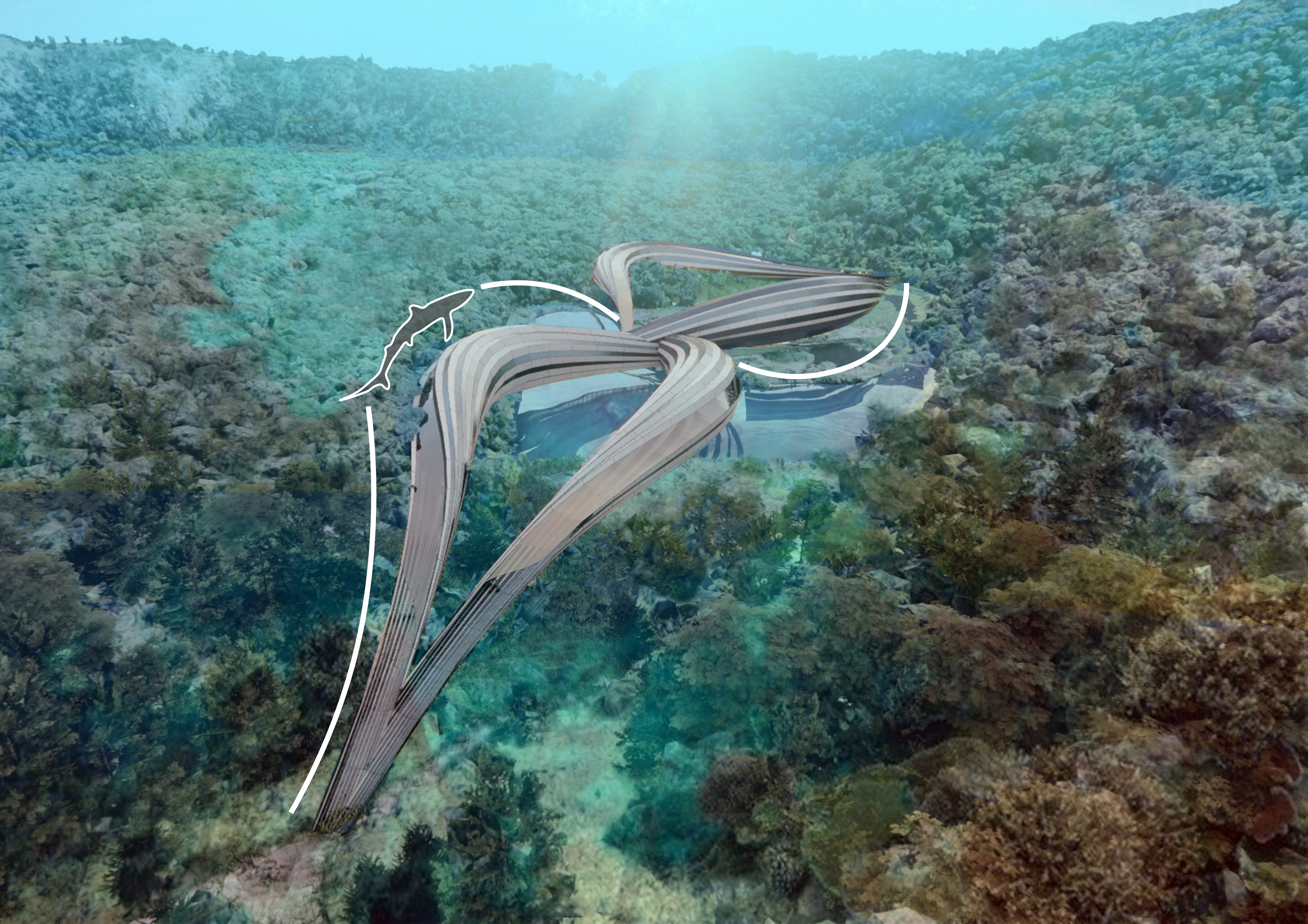
Concept
MoVa is a project for a museum located in the crater of Lago Grande in Pozzuoli, near Naples.
The museum has the purpose of raising awareness towards the extinction of species.
The project’s inspiration came from a new in 2020 when a blue shark was seen in the port of Pozzuoli. This event is unique not only because blue sharks are a threatened species but because the shark was very far from its usual migration track.
The reason for a blue shark presence near the port of Pozzuoli can be explained by the extraordinary condition of lockdown where ports were empty and seas water was cleared out from pollution and traffic.
The lockdown’s unprecedented situation was proof that when habitats are respected animal species survive and thrive, meaning that respecting natural environments implies animal life survival.
Starting from these conclusions the museum’s space design aims to reproduce in the spatial experience the migration behavior of blue sharks across the Atlantic Ocean.



The form finding study started from a research done on 15 blue sharks in a period of one year.
In the pattern notice how movement direction is extremely precise despite the vast ocean and oriented to migrate from the coasts of America to the coasts of Europe and Africa. From one coast to another several hotspot points were monitored were sharks move vertically into the deep ocean for nutrition and for thermal regulation.
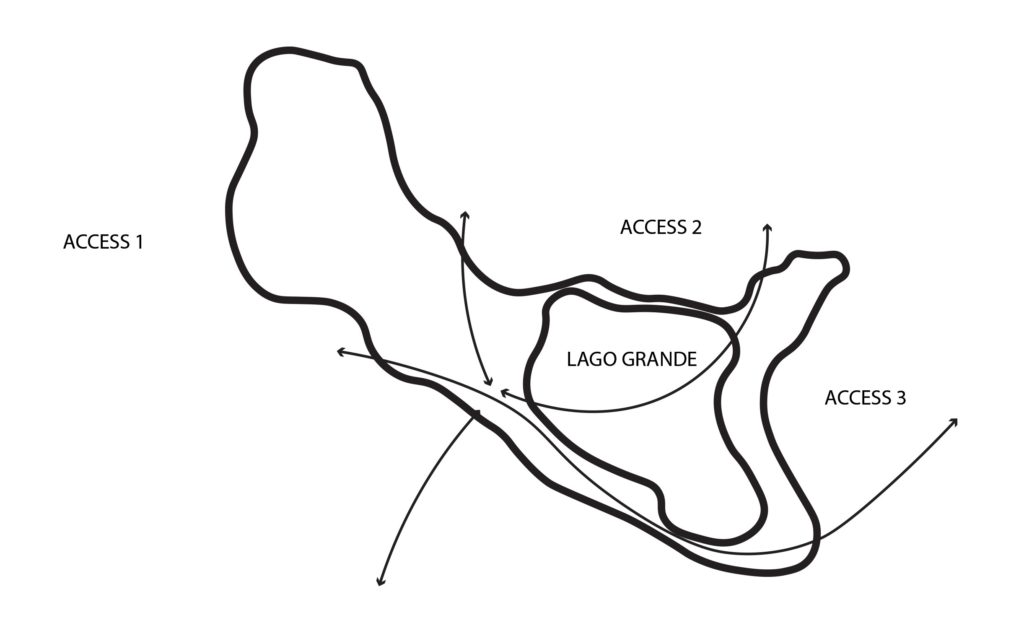
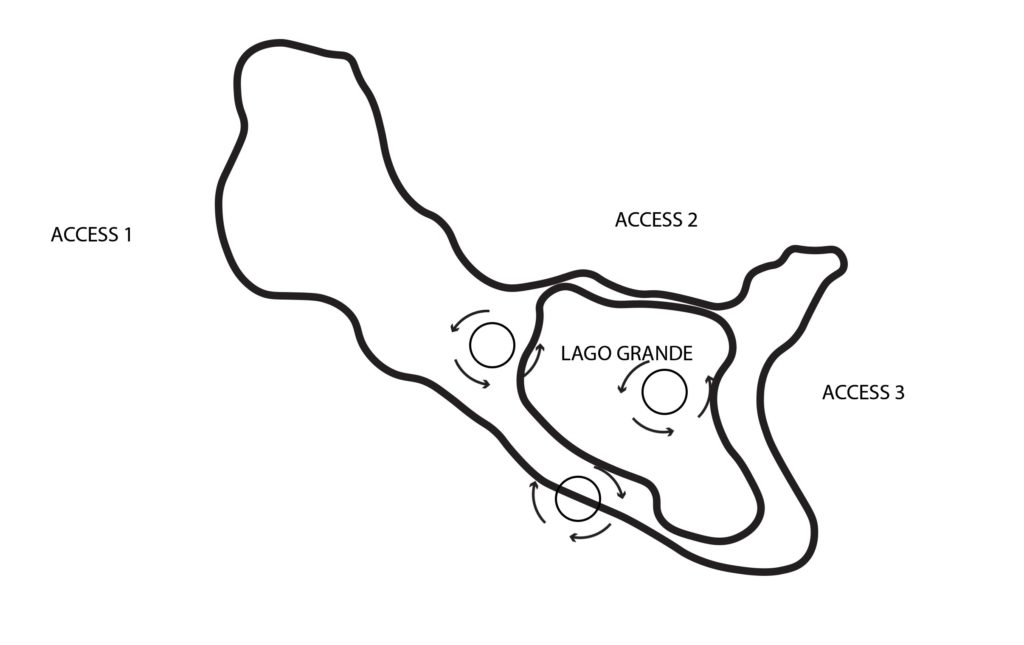
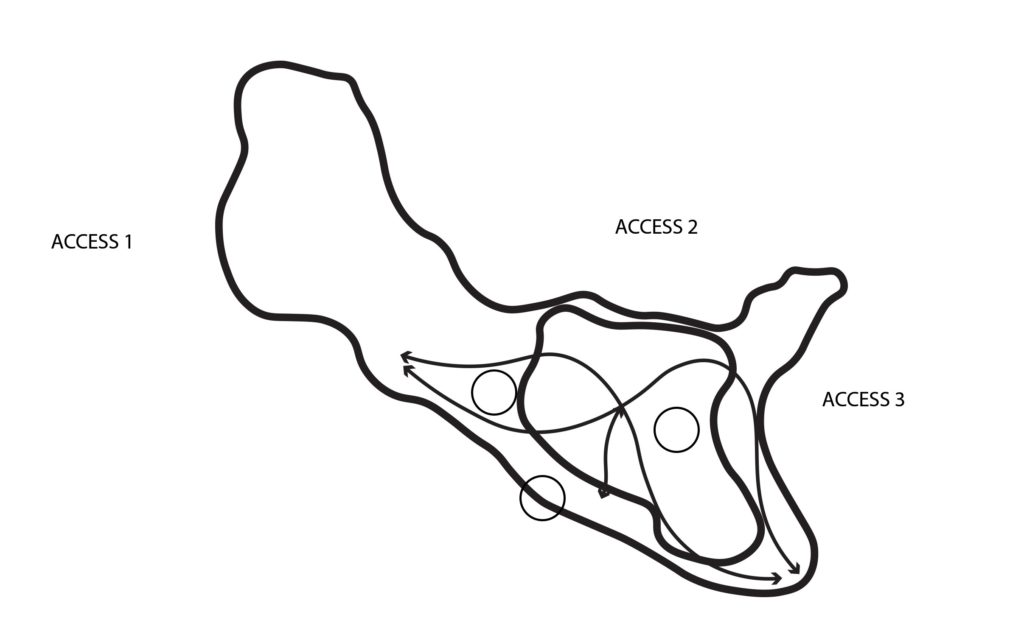
In the same way the museum connects three “migration” starting points connecting the existing three paths allowing to cross above Lago Grande. From the ground level the massing moves up and down to imitate sharks’ movements in the depth of the ocean in a specular way, where the ground floor is the surface and the sky is the deep ocean.
Design Steps and Iterations
The whole process towards the final massing is parametric starting from a boundary triangle and 3 hotspot points in the middle.
A vector field generates from the three directions three paths attracted and repulsed by the previously set points, the hotspots [1]. Vertical movement is controlled by a sine function. Zeros correspond to the points where the structure touches the ground and ones to the highest points at 25 m, as per requirement [2]. : Radius is controlled in three points along the path and it varies from 1.6 to 3 m radius [3]. In order to control the accesses as opened space and the amount of light that enters the museum [4]. Kangaroo Solver is used on the stripes to apply loads to the circular sections’ stripes edges to create a folded section that strengthens the section and enhance the under the sea feeling [5].
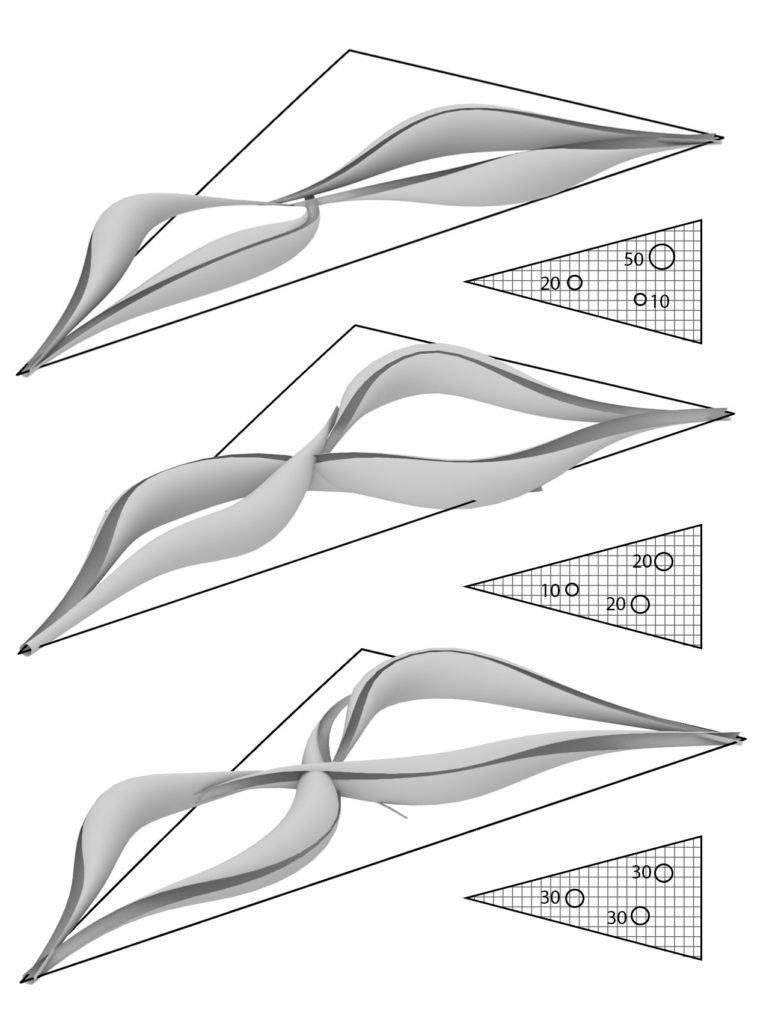
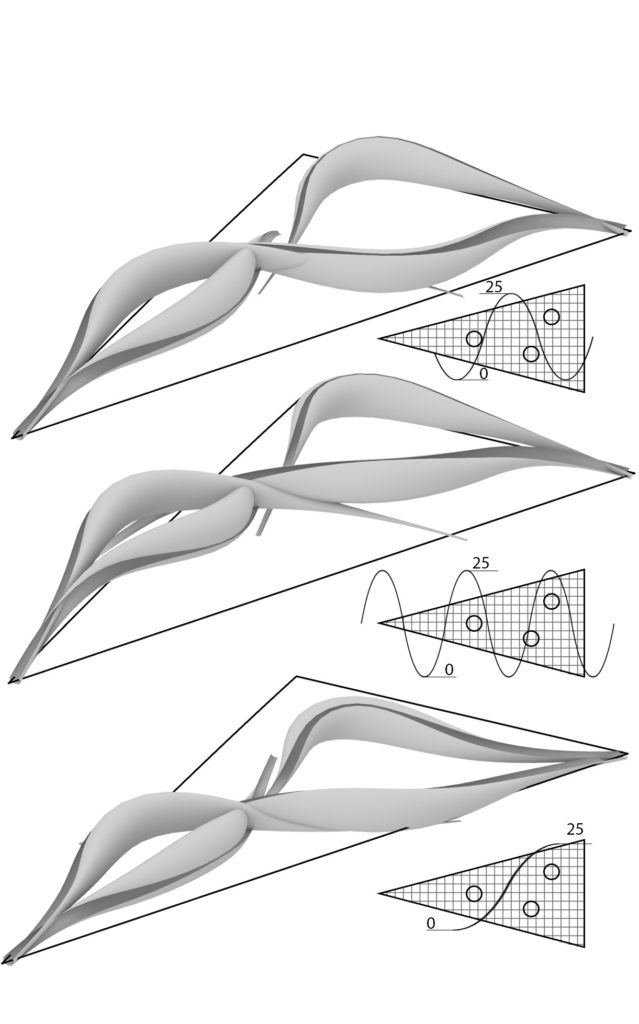
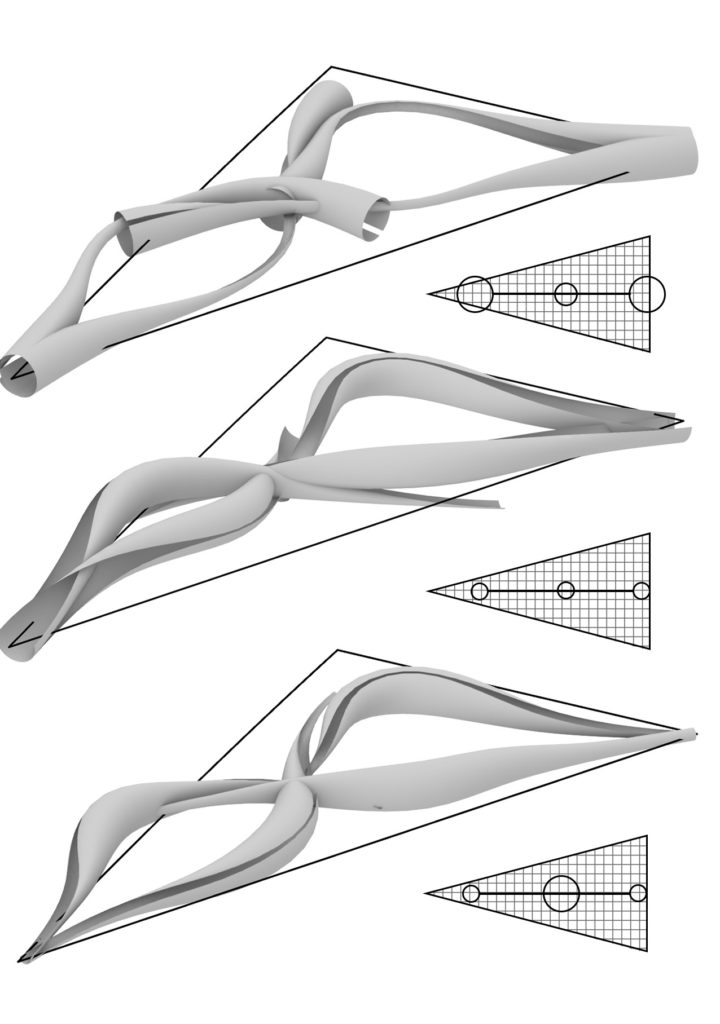

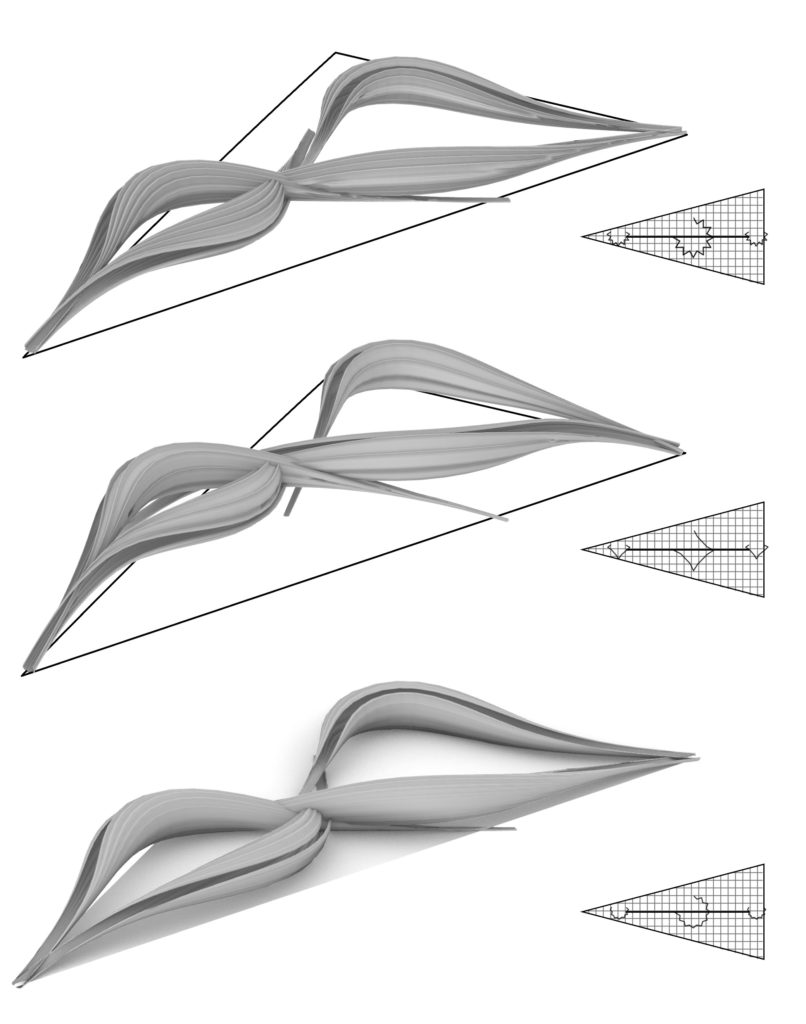
Mesh Preview

Drawings
